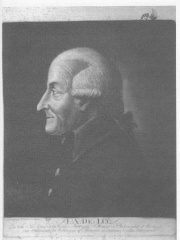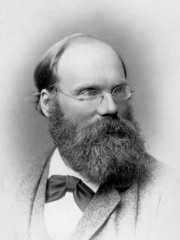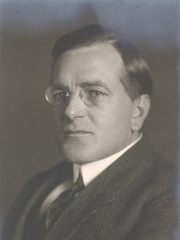


The Most Famous
GEOLOGISTS from Switzerland
This page contains a list of the greatest Swiss Geologists. The pantheon dataset contains 90 Geologists, 3 of which were born in Switzerland. This makes Switzerland the birth place of the 7th most number of Geologists behind Russia, and Canada.
Top 3
The following people are considered by Pantheon to be the most legendary Swiss Geologists of all time. This list of famous Swiss Geologists is sorted by HPI (Historical Popularity Index), a metric that aggregates information on a biography's online popularity.

1. Jean-André Deluc (1727 - 1817)
With an HPI of 65.21, Jean-André Deluc is the most famous Swiss Geologist. His biography has been translated into 27 different languages on wikipedia.
Jean-André Deluc or de Luc (8 February 1727 – 7 November 1817) was a geologist, natural philosopher and meteorologist from the Republic of Geneva. He also devised measuring instruments.

2. Albert Heim (1849 - 1937)
With an HPI of 59.27, Albert Heim is the 2nd most famous Swiss Geologist. His biography has been translated into 19 different languages.
Albert Heim (12 April 1849 – 31 August 1937) was a Swiss geologist, noted for his three-volume Geologie der Schweiz.

3. Paul Niggli (1888 - 1953)
With an HPI of 56.60, Paul Niggli is the 3rd most famous Swiss Geologist. His biography has been translated into 17 different languages.
Paul Niggli (26 June 1888 – 13 January 1953) was a Swiss crystallographer, mineralogist, and petrologist who was a leader in the field of X-ray crystallography.
People
Pantheon has 3 people classified as Swiss geologists born between 1727 and 1888. Of these 3, none of them are still alive today. The most famous deceased Swiss geologists include Jean-André Deluc, Albert Heim, and Paul Niggli.
Deceased Swiss Geologists
Go to all RankingsJean-André Deluc
1727 - 1817
HPI: 65.21
Albert Heim
1849 - 1937
HPI: 59.27
Paul Niggli
1888 - 1953
HPI: 56.60
Overlapping Lives
Which Geologists were alive at the same time? This visualization shows the lifespans of the 3 most globally memorable Geologists since 1700.

